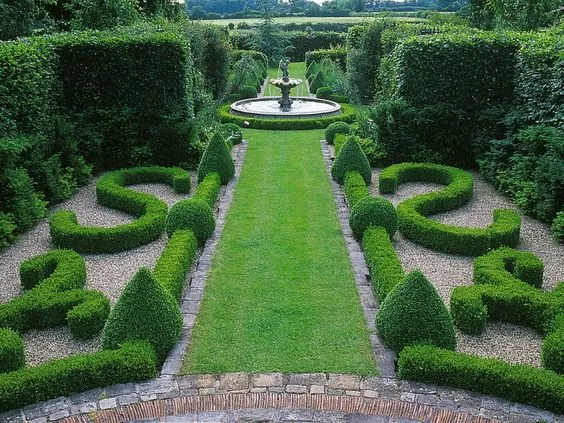Top Guidelines Of Landscapers
Top Guidelines Of Landscapers
Blog Article
An Unbiased View of Landscapers
Table of ContentsThe Best Guide To LandscapersGetting The Landscapers To WorkThe Landscapers StatementsAn Unbiased View of LandscapersAn Unbiased View of Landscapers
- A tree or shrub (hedge) that loses its leaves in winter. In the PNW there are semi-deciduous or semi-evergreen plants that might lose their fallen leaves relying on how cool the winter months is. Abelia and some hebe are fine examples. Landscapers. - A flat celebration space, constructed from timber or composite product (made to appear like timber), generally nearby or affixed to a framework.

This is a natural procedure, and the result can be utilized for courses and patios. - Trick landscape attributes being proposed in a landscape layout strategy.
Landscapers Things To Know Before You Get This
These goals lead the design process, not the developer's design or preferences. Usual layout purposes in Rose city are low upkeep, dry spell tolerant, and animal friendly.
Over time this layer can obtain extremely thick and make it challenging for water, sun, and nutrients to get to parts of the turf.- The process of accumulating and managing the flow of water on a residential or commercial property. This can be finished with grading, French drains, dry wells, absorptive surfaces, sump pump, rain yards, and a lot more.
- A sluggish feeding watering system that utilizes adaptable tubes and emitters to send an accurate quantity of water to each plant. - The capability of a plant to endure without much summer season water.
- A yard feature where water is represented by an accumulated stone item, normally a crushed rock or granite. These are most typically found in contemporary and Japanese yard style.- A stone or natural flagstone outdoor patio, path, or sidewalk developed without a concrete base. The base would certainly be compressed gravel and the joints would be an aggregate or walkable ground cover.
Little Known Questions About Landscapers.
- A rock preserving or cost-free standing wall constructed without the usage of mortar. - A below ground structure that accumulate water and allows it to slow down percolate into the dirt around it.
Landscape design that is suitable with a websites' atmosphere in both appearance and sustainability without negative effects to the setting. Bordering in the landscape is a line of separation that develops visual interest in the yard by separating one section from one more section. This can be aesthetic or functional, keeping one element (such as pea crushed rock) from getting blended into an additional (like bark dust).
Areas can likewise have a feeling of "enclosure" provided by trees, various other growings, fencings, or displays. The landscape near the entrance to a building. A tree, bush or vine, trained to expand on a wall or fence right into a certain pattern. Specifically beneficial for fruit trees, making it simple to collect the fruit and including mess.
A plant that is foreign to the area where it will have a peek at this website certainly be grown. Not all "exotics" are intrusive or harmful, and lots of can be well behaved or dry spell forgiving (Landscapers). A mass planting of ferns. Thicker bladed lawn grass that spread through rhizomes.: The degree of soil on your residential or commercial property prior to bark dirt or garden compost is spread.
About Landscapers

The purpose, reason, or action that website here an area is be landscaped for. Stairways work, for instance, to permit foot web traffic up and down a slope. article source Room for growing plants for watching, consuming, or exercise. A roofed structure used over an outside event space. The growing of a seed, maybe referring to a lawn that is being expanded from seed.
Rock item, either rounded or fractured, that is reasonably tiny- normally 1" or less. Reduced plants that are enabled or urged to top a location. Can describe any kind of "difficult" yard elements including statuary or rocks but a lot of typically is made use of to describe courses, outdoor patios, and walls.: Elevation distinction between the degree of water in a fish pond (or the level of the pump if it rests outside the pond) and the top electrical outlet of water which affects performance of the water pump in gph (gallons per hour). Thick shrubs or trees that create a fence, screen, or boundary.

The Buzz on Landscapers
A more kicked back yard controlled by curved as opposed to straight bed lines and a less stiff structure. Conventional PNW landscapes are informal. A plant that spreads out greater than wanted, or right into environments where it does damages. Portland has a listing of intrusive plants that ought to not be mounted in landscapes because they can spread to forests or rivers and be difficult to manage.
Can consist of head placements and protection, pipeline sizing, GPM specifications, and products required to mount this system. Accredited professional that makes landscapes, educated in design and design as well as in horticulture.
The professional who intends and creates landscape projects, usually at a household or tiny industrial degree with the major layout catalyst on plantings. Landscape developers commonly have much less education than Landscape Architects and are not licensed. A finished landscape layout, detailing all elements for the new landscape. This usually takes the kind of a drawing theoretically.
A water limited HDPE product used below ponds, streams and waterfalls in water attributes. Utilizing numerous growings of the same range to fill up in an area in the landscape.
Report this page